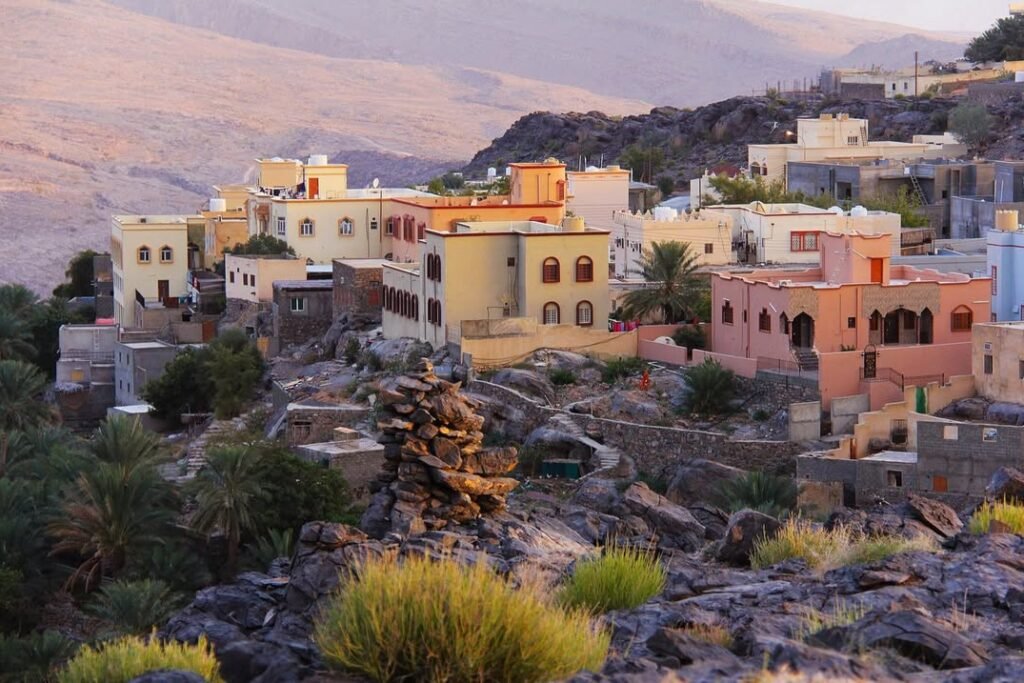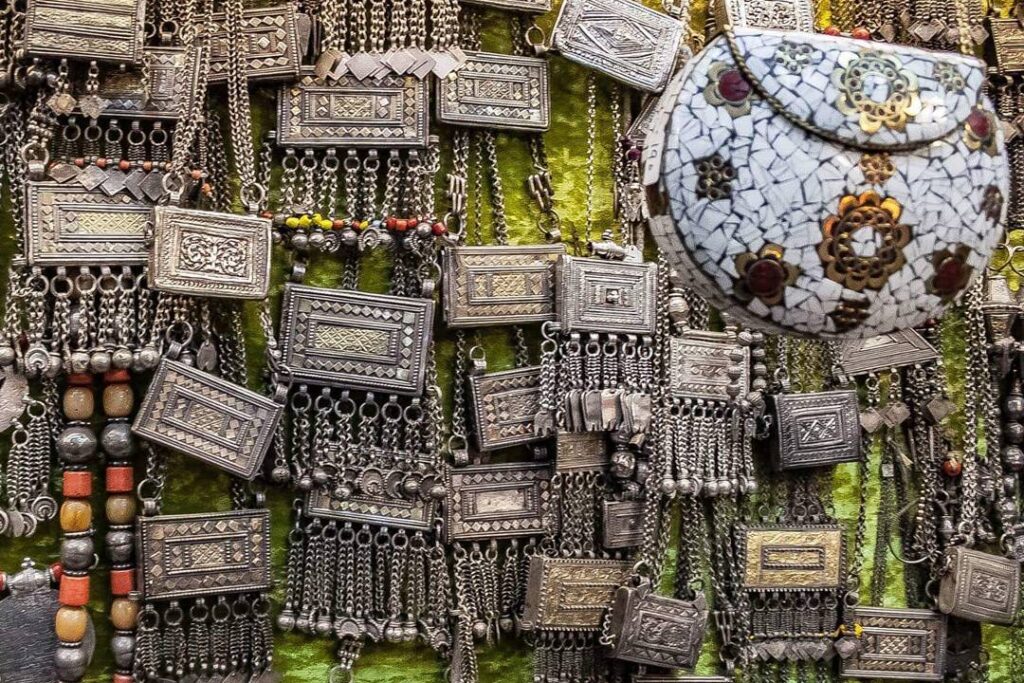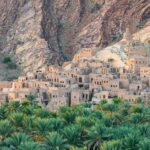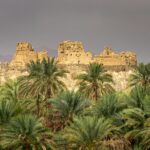Beautiful, wild, unique, sometimes lush… Located in the far south of the Sultanate of Oman, the Dhofar Oman region is one of the most fascinating in the country. No doubt: it deserves to be part of your itinerary. Here’s why you absolutely must discover this unique territory.
Table of Contents
Nearly 900 kilometers separate Muscat from Salalah, the capital of Dhofar. But in 1h35 of flight, you will have the impression of having changed countries. As soon as you arrive, you will be struck by the tropical atmosphere of this peaceful city on the Arabian Sea. With its coconut palm-fringed beaches and exotic fruit plantations, Salalah is unlike any other city in the Sultanate of Oman.
Ideally located, it is also an excellent starting point for exploring this unique region. Whether you are looking for a sporting, cultural, or relaxing holiday, you will find what you are looking for here. Sip coconut water in one of Salalah’s many kiosks then set off to discover the riches of Dhofar Oman.
Secret dream beaches
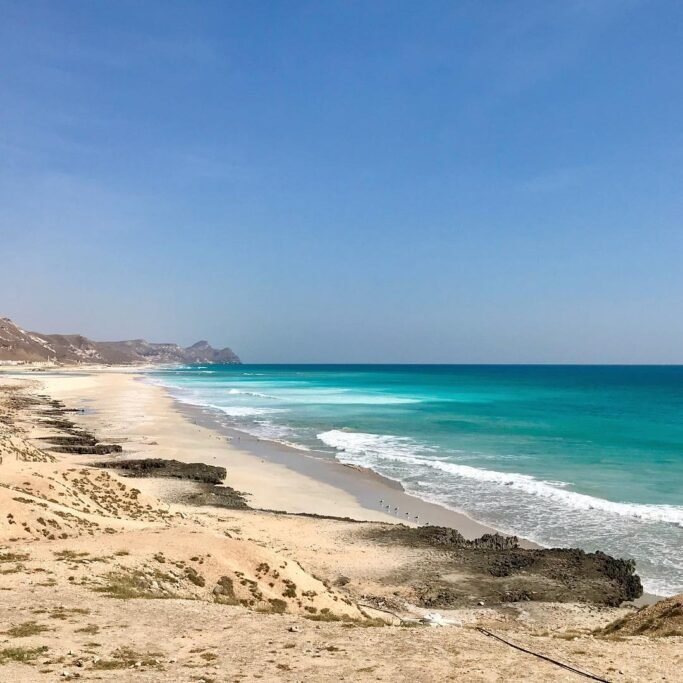
Along the Arabian Sea, immense white sand beaches unfold their purity to infinity. Still little urbanized, the coast of Dhofar is breathtakingly beautiful. The coastal mountains plunge steeply into the turquoise water. Dhofar is an ideal beach destination during our winter months. You will bathe in warm water in the middle of an exceptional setting.
While some beaches are known, such as Mughsayl and Fazayah to the west of Salalah, and Taqah and Mirbat on the east side, dozens of others are hidden all along the coast. It’s up to you to explore them!
| Tip: public transport is rare, and it is preferable to have a vehicle. Count around 15 OMR/day (€36) to rent a passenger car and 50 OMR (€122) for a 4×4. The busiest beaches are equipped with wooden parasols or sheds to shelter from the sun. On the other hand, the isolated beaches are not equipped, so bring everything you need: a parasol, water to rinse off (there are no showers), and your picnic items. |
A thousand-year-old history linked to the incense trade
It is the treasure of Dhofar. Frankincense has been the wealth of the region since Antiquity, where it was prized by the Greeks, Romans, and Egyptians. Even today, this resin extracted from the Boswellia sacra tree continues to make Dhofar shine throughout the world.
Since 2000, four sites have been classified as UNESCO World Heritage sites under the Land of Incense label: the Wadi Dawkah nature reserve, the remains of the caravan oasis of Shisr (Ubar), and the ancient ports of export of Khor Rori (4th century BC—5th century AD) and Al-Balid (8th-16th century AD). These are must-visit sites, without forgetting the Land of Incense museum in Salalah and the Al-Hafah souk to buy a small incense kit!
| Practical info: entry to the sites of Al-Balid and Khor Rori is payable: 2 OMR for a 4×4 (€5), and 1 OMR (€2.5) for a passenger car. |
Wild and preserved nature
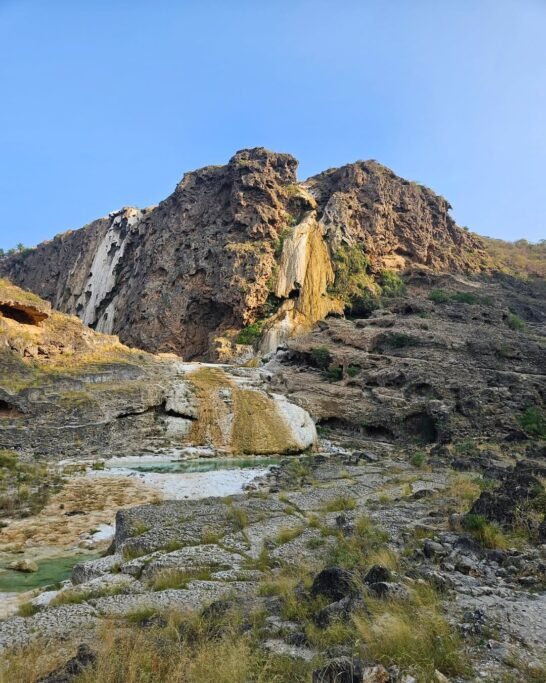
The southernmost province of this small monarchy, described as “Switzerland of the Middle East”, is a nature destination, with vast expanses classified by Unesco.
If the beaches are magnificent, Dhofar is also renowned for its amazing mountains peaking at nearly 1500 meters.
From June to September, they are watered by monsoon rains ( khareef ), making the landscapes lush. If you go there in October or November, you will enjoy the greenery with a beautiful blue sky. In Wadi Darbat, the waterfalls and pools of emerald water will make you forget that you are in the Arabian Peninsula!
Don’t miss the Djebel Samhan nature reserve, the Tayq cave, the Tawi Ateer chasm, and the Ayn Kour waterfall.
| Tip: Some sites are easily accessible by car, but some valleys are very remote and require a 4×4. To go hiking, it is best to be accompanied by an expert in these mountains. Ahmed Al-Mahri is an English-speaking guide who organizes excursions on foot and in 4×4 with his agency, Salalah Glory Tours. |
Which season to choose?
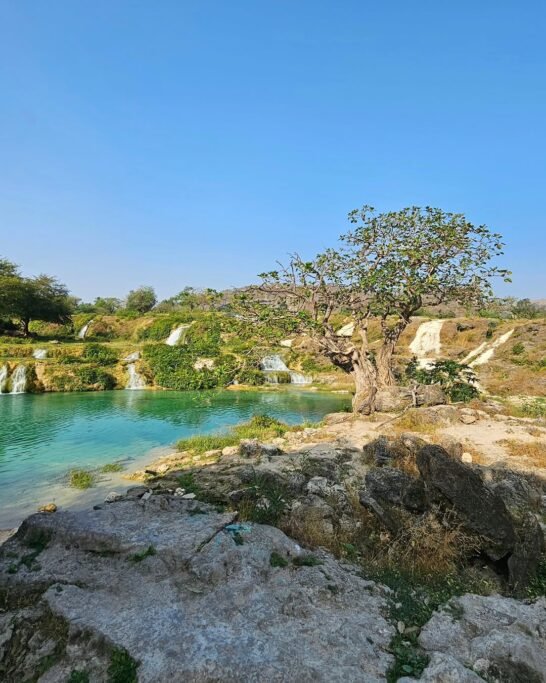
The best period to enjoy dry and sunny weather is from October to March: daytime temperatures vary between 27 and 32°C and the sea is 24-29°C. In the mountains, at the same time, it is a little cooler, between 21 and 27°C, ideal if you want to go hiking.
To experience lush, green Dhofar, go during khareef , the rainy season from June to September. A drizzle and mild temperatures (around 27°C) will be expected.

